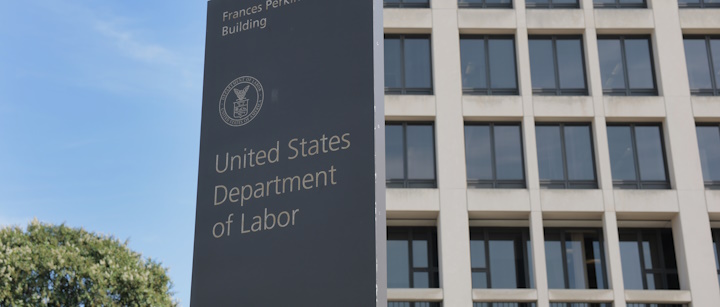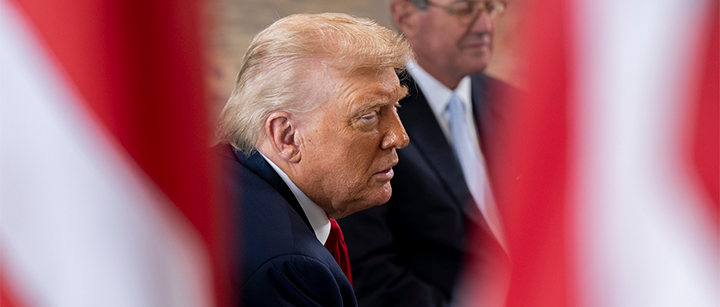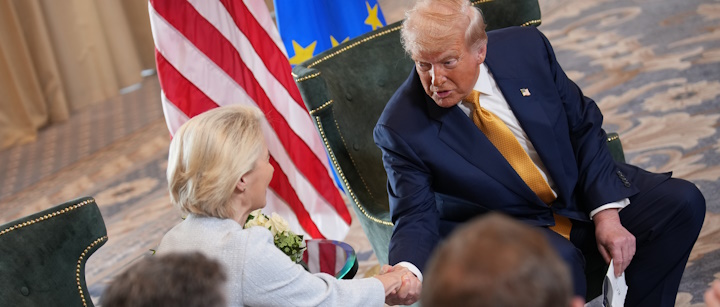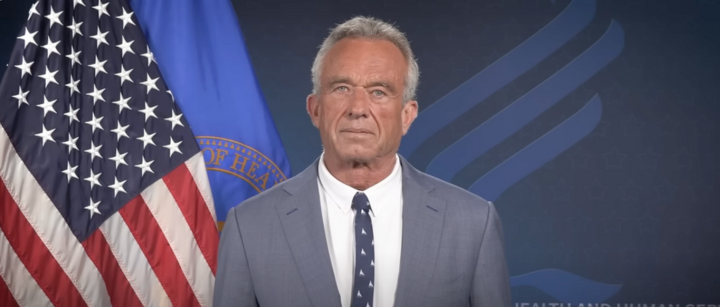Trump Exaggerates Trade Deficit with Switzerland by Ignoring Surplus in Services
Este artículo estará disponible en español en El Tiempo Latino. President Donald Trump has cited a $40 billion trade deficit with Switzerland to justify a new, high tariff on imported Swiss goods. But his figure ignores trade in services. The overall goods-and-services deficit is less than $9 billion. After months of warnings and negotiations, Trump signed an executive order on July 31 setting tariff rates on U.S. trading partners who didn’t “sufficiently address imbalances in our trading relationship.” Among the nations hit with the highest tariff rates is Switzerland, with a 39% rate. “The problem with Switzerland,” Trump told reporters the next day, is “we have a $40 billion deficit with Switzerland. … That’s a big deficit.” He repeated the claim in an Aug. 5 interview on CNBC, increasing the purported deficit with Switzerland to $41 billion. Recounting his phone call with Swiss President Karin Keller-Sutter, Trump said he told her, “We have a $41 billion deficit with you, madam. … And you want to pay 1% tariffs. … We lose because I view deficit as loss.” Trump does not account for the U.S. surplus in trade services with Switzerland in his calculation, only the deficit in trade goods. It’s an omission he makes in other claims about trade imbalances with other countries. He also mischaracterizes a trade deficit as a loss for American consumers, experts told us. Trump’s claim of a $40 billion trade deficit with Switzerland “is not accurate,” Ryan Young, a senior economist with the Competitive Enterprise Institute, an organization opposed to government over-regulation, told us in an email. Young cited data from the Office of the United States Trade Representative, which show that the U.S. goods trade deficit with Switzerland in 2024 was $38.3 billion, a 56% increase over the previous year. The U.S. services trade surplus with Switzerland was $29.7 billion in 2024, a 31% increase over 2023. Swiss-made Rolex watches. Photo by malajscy / stock.adobe.com. “This means America’s total goods and services deficit with Switzerland is about $8.6 billion,” Young said. It is also “inaccurate to say that we lose $40 billion a year with Switzerland … because people get something in return for their money,” Young said. The trade deficit with Switzerland “is in line with the broader multilateral pattern: the United States runs a goods trade deficit and a services trade surplus,” Jonathan Dingel, an associate professor of economics at Columbia University, said via email. “Running a bilateral trade deficit with Switzerland simply means that United States buyers imported more from Swiss sellers than Swiss buyers imported from US sellers. There is no sense in which a bilateral trade imbalance constitutes a win or a loss,” Dingel said. Gene M. Grossman, a professor of economics and international affairs at Princeton University, agreed. “Trump views trade as a zero sum game where everything you buy is a loss. But of course, that’s nonsense,” Grossman said in an email. The top Swiss imports to the U.S. include pharmaceutical products, gold and other precious metals and stones, watches and clocks, optical and medical equipment, organic chemicals, precision machinery, and, to a lesser degree, Swiss chocolates. Gold, Switzerland’s top export to the U.S., is exempt from the tariffs, and pharmaceuticals, the second largest Swiss export to the U.S., are temporarily excluded, the New York Times reported. “In the short run, consumers will see higher prices for many Swiss goods. These include chocolate, dairy products, and watches,” Young said. “Medical supplies, another significant Swiss product, will be hit, which could affect some treatment costs and related co-pays and insurance premiums.” “In the medium run, Switzerland exports a lot of chemicals and manufacturing equipment to the US. This doesn’t go directly to consumers, but increased costs do reach consumers eventually,” Young also said. “Tariffs are a tax, and Americans will pay them, one way or another. Some of the cost is at the checkout aisle, and some of it is more subtle and more downstream. But people still pay.” On April 2, when Trump announced “reciprocal” tariffs for other countries, he shared a misleading chart that showed a 31% tariff to be imposed on Switzerland. As we wrote in April, USTR said that while computing trade deficit effects for every country “is complex, if not impossible, their combined effects can be proxied by computing the tariff level consistent with driving bilateral trade deficits to zero.” To arrive at the appropriate tariff rate, USTR said it divided the size of a country’s trade imbalance with the U.S. in goods by how much America imports in goods from that nation. A White House spokesperson told us Trump increased the tariff rate on Switzerland to 39% because “that was the rate that the President decided based on consultations with his trade and economic team that considered, among other factors, Switzerland’s relative trade deficit, seriousness in trade negotiations, and the fact that Switzerland is one of the world’s wealthiest, highest income countries.” In response to Trump’s announcement of a 39% tariff, the Swiss government said in an Aug. 4 press release, “Switzerland’s trade surplus to March 2025 is not the result of any ‘unfair trade practices’. In fact, Switzerland unilaterally scrapped all tariffs on industrial goods as of 1 January 2024, meaning over 99% of US goods enter Switzerland tariff-free.” The Swiss government also said it was planning to continue negotiations on a trade deal with the U.S. and “present a more attractive offer” before the tariff was scheduled to take effect on Aug. 7. Distorting Trade Balances With Other Countries Switzerland is not the only example where Trump misrepresented the overall trade deficit with another nation. At a Jan. 7 press event at Mar-a-Lago, Trump said, “European Union, we have a trade deficit of $350 billion.” But in 2024, the U.S. exported $666.7 billion in goods and services to the EU, while it imported more than $815.1 billion, resulting in a trade deficit of about $148.4 billion, as we’ve written. In negotiating an agreement with the EU in July that imposed a 15% tariff










